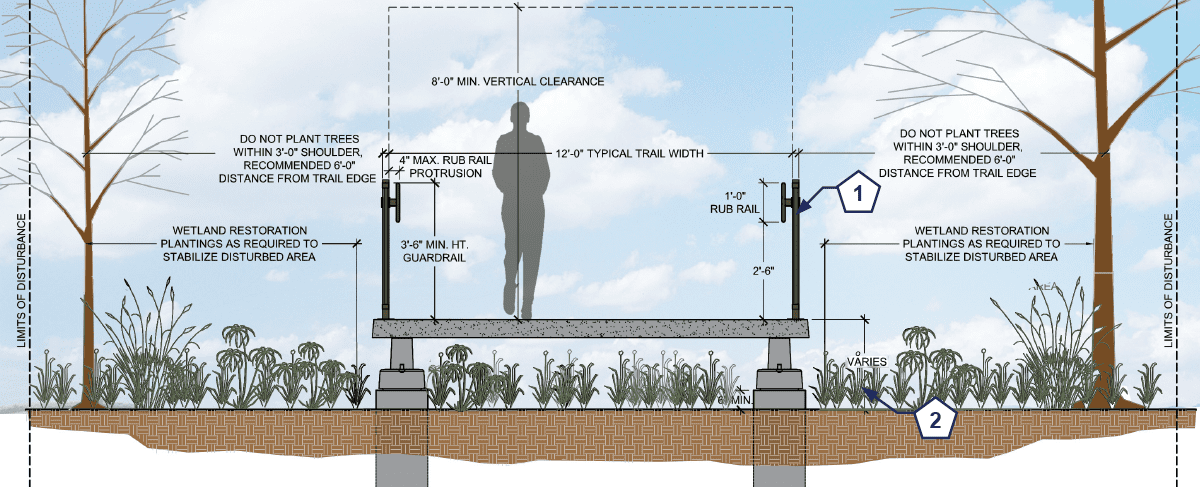Boardwalks offer a unique user experience and allow for a lighter touch trail placement through wet areas. Despite their inherent appeal, boardwalks have very specific challenges from a safety and maintenance perspective.
Boardwalks are long, linear decks used as a trail surface where a typical trail cross section is not feasible due to terrain that is difficult to traverse because of wet or rough conditions, or a typical trail cross section would adversely impact fragile habitats. They shall be used if existing soils are poor and would require excessive subgrade treatments, for small water crossings where culverts would be too restrictive and a large bridge span is not necessary. If longer, clear spans are required or if traversing deep or moving water (larger streams), then the proper trail surface is a bridge. For crossing small watercourses or intermittent streams without changes to the trail surface material, culverts are to be used.
Boardwalks consist of concrete or plastic composite decking just above to a few feet above the existing ground. Boardwalks have curbing or railings and are typically supported with piers or foundations every few feet. However, these impacts to existing ground should be minimized as much as possible. Railings and curbing are used to minimize fall risk and/or side protection to prevent pedestrians and other elements (i.e. strollers, wheelchairs) from slipping off the boardwalk surface. There shall be an open section between the railing and boardwalk surface to avoid restricting the free flow of water across the trail, which is needed in this situation.
All boardwalks constructed within a delineated wetland boundary create both permanent and temporary impacts to wetlands. All permanent impacts shall be avoided, if possible, and areas temporarily impacted shall be restored whether regulated or not. Wetland impacts may require state and federal permits and mitigation.
Design Metrics:
- Standard Width – Equal or greater width than approaching trail. The standard trail is 12’-0” wide.
- Railing Height – 42” measured from the walking surface to be used if surface of boardwalk is 30” above finish grade. Extend boardwalk railing past abutment as needed to protect trail users from fall hazards, min. 6’-0”, typ.
- Curb height – 6” from walking surface to be used when boardwalk is less than 30” above finish grade (secondary path only).
- Minimum Rail to Rail Clearance – 12’-0”
- Minimum Above Water Clearance – 12”-0” above anticipated 10 year storm elevation measured from the lowest structural member.
- Design Load – H5 (10,000 lb) for ambulance or fire rescue apparatus.
Environmental Graphics
Boardwalks provide a valuable opportunity for the installation of visual elements that elevate brand awareness, enhance user experience and communicate interpretive messages. Great Rivers Greenway has created an environmental graphics toolkit that contains various designs and elements that can be considered during the planning and design process.
STANDARD CROSS SECTION

COMPONENTS: Click below for more information on each component.
1) Handrails
